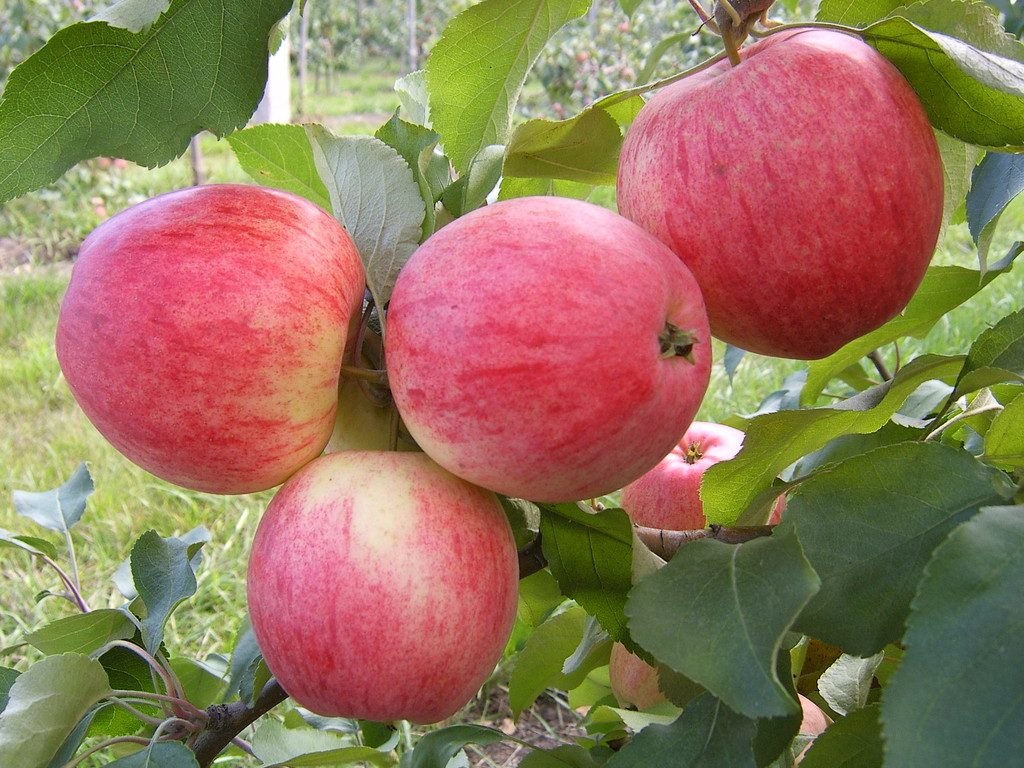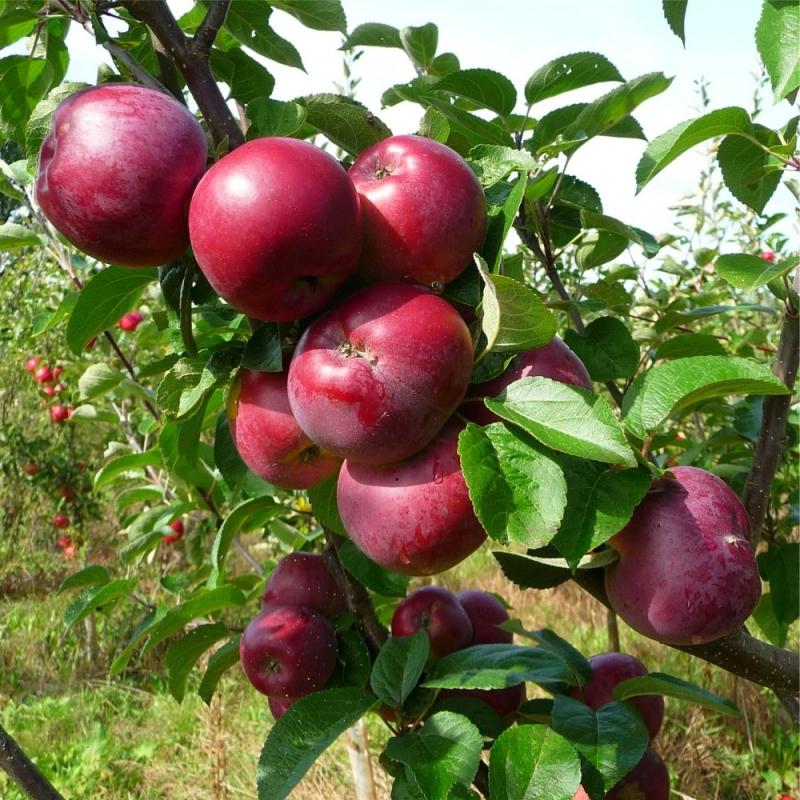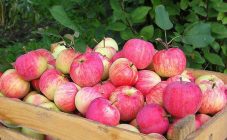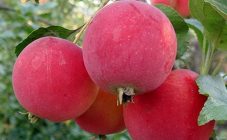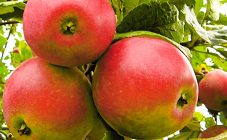Content:
Apple trees are perhaps the most common fruit trees in domestic summer cottages. An innumerable number of varieties have been bred by breeders, but there are real favorites among gardeners. The Spartak apple variety is a striking representative of productive autumn varieties. Its popularity is due to a combination of advantageous features that allow apples to be grown in unstable climatic conditions: excellent adaptive abilities, good cold resistance, early ripening of fruits.
Description of the apple tree Spartak
The varietal species was bred by the scientist and breeder S.P. Kedrin by selection of Sharopay seedlings in the Samara region. There are suggestions that one of the "parents" of the variety is Kryzhapel ordinary. The most common fruit tree in the Middle Volga region. The variety belongs to the group of selection achievements that are approved for use in the East Siberian region and the Middle Volga region.
Mature trees are medium in size. The crone is characterized by a wide-pyramidal dense form. Skeletal branches are located at an acute angle relative to the trunk, which sometimes becomes the main reason for their fracture. It is important to take this into account when forming the crown. The ability to form kidneys is excellent. Fruiting is carried out on all possible types of fruit formations.
The shoots of this variety of apples have a regular shape, reddish-brown color with medium pubescence. Lentils are white in color and round in shape, quite common. The leaves are characterized by an oblong-oval shape, the tip is elongated. The characteristic feature of the leaf is significant complexity.
The fruits of the variety are of medium size, the shape is flat-rounded or round. As a rule, the average weight of the fruit varies from 90 to 160 g. On young trees, subject to all the rules of agricultural technology, the weight of the fruits can reach 300 g. The peel of mature apples has an average thickness with a glossy sheen and is quite strong. The fruits are colored yellow, and a striped blush forms on top as they ripen. The subcutaneous dots of white color are hardly noticeable, since they are very small in size. The peduncle is of medium length and thickness.
The fruits ripen at the end of August, the harvest is harvested until mid-September. Ripe fruits, subject to all storage rules, can lie until mid-winter. But it is recommended to eat fruits until the end of autumn, since gardeners have noted a gradual loss of the taste of fruits. This variety is ranked among the varieties of intensive growth. The early maturity is excellent. The commercial and consumer qualities of fruits are high.
The tree begins to bear fruit, subject to all the rules of planting and care, after 3-4 years. Poor scab resistance is noted.
Agricultural rules
Planting apples is best done in the fall or with the onset of spring. If the growing region is characterized by early autumn frosts, then it is better to postpone planting for the spring before the beginning of the growing season.
The distance between seedlings should be about 5 m. This is really necessary, given the size of an adult tree, so that the seedlings can fully receive a lot of light without shading each other.
The apple tree of this variety is unpretentious to the composition of the soil, therefore planting is carried out according to the standard scheme. The dimensions of the planting pit should be at least 90 * 100 * 60 cm. A mixture of rotted humus, compost and earth is evenly distributed along the bottom. If the seedling has an open root system, then the roots must be carefully spread over the hole. But, since many nurseries today offer planting material in containers to the attention of gardeners, it further simplifies planting. If the seedling has lumps of earth, then it is simply lowered into the planting recess.
The roots are covered with soil and as the holes are filled, they are compacted (there should be no cavities among the roots!). After completely filling the hole, the soil is compacted again and abundantly filled with water (at least 20 liters). After watering, the trunk circle is mulched with compost or peat. The result obtained will depend not only on compliance with all planting rules, but also on the quality of the planting material.
After planting, care includes the following manipulations:
- Regular and abundant watering (at least 4 times a month).
- To saturate the root system with oxygen, weeding and loosening should be done regularly.
- Mulching the soil and sheltering the tree before the coming winter cold so that it does not freeze.
- Observe all preventive measures to prevent the development of diseases and attacks of insect pests; inspect trees regularly for damage.
If the gardener follows all the above recommendations, he will be able to grow a healthy and abundantly fruitful tree.
In the spring, it is recommended to add nitrogen-containing compounds to the soil, and with the onset of autumn - mineral complexes developed for fruit trees. For better digestibility of dressings, after adding them to the soil, it is recommended to water the tree with several buckets of water.
The branches of the apple tree are located at right angles to the trunk, this often causes fractures. To prevent such a phenomenon, it is required to regularly form the crown of a young tree. The first pruning should be carried out in the first year after planting, cutting off all shoots, and skeletal branches, shortening up to 3 buds. In all subsequent years, it is necessary to remove weakly growing, damaged, non-fruiting and crooked shoots, as well as those that grow at a right angle to the stem.
Protection from insects by folk methods
To combat parasites, it is not recommended to use chemicals that negatively affect the quality and composition of fruits. Here are proven by gardeners and effective folk methods to destroy insects:
- Black henbane actively helps in the fight against herbivorous bugs and aphids. To prepare the product, you will need 1 kg of dried herb and 3 liters of water. The resulting composition is boiled over low heat for at least 1 hour. Then the broth is cooled, diluted with water so that the total volume is 10 liters and poured into a spray bottle to irrigate the tree.
- Steep boiling water helps to get rid of ants, it is enough for them to water their habitat.
- A decoction of tomato tops allows you to effectively deal with caterpillars and leaf-eating insects. For cooking, you need 1 kg of tomato tops, pour 10 liters of water and leave for at least 5 hours. The resulting composition is simmered for at least 3 hours and more water is added 3 times more than the available volume. As soon as the solution cools down, you can start processing the orchard.
Advantages and disadvantages of the variety
Many beloved apple varieties have many positive properties, and this is why it is in demand among domestic gardeners:
- The variety can be grown on an industrial scale due to its excellent taste and presentation.
- High rates of frost resistance and drought resistance.
- Possibility to cultivate fruit trees in intensive orchards.
- Early fruiting period.
- Stable harvest for many years (subject to all agricultural rules).
The main disadvantages of the variety include poor resistance to scab (fungal disease), as well as the loss of taste of Spartak apples during long-term storage.
Be that as it may, in terms of characteristics, the Spartak apple tree is one of the most popular varieties today. This is due to a large number of advantages, including unpretentious care. Even a beginner can grow a fruiting tree.
